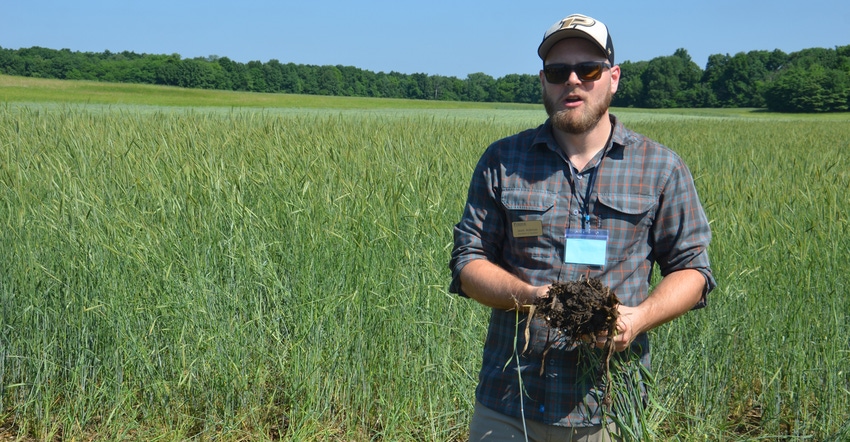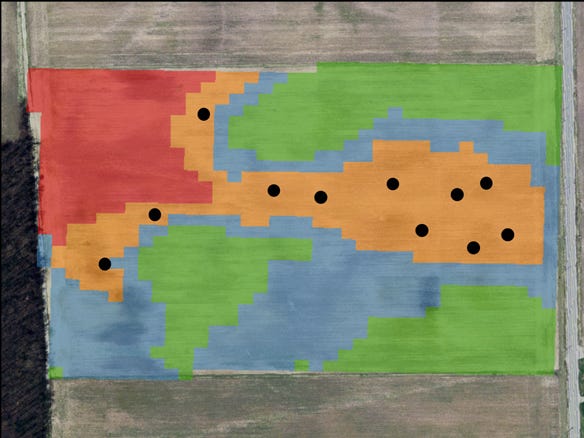
Nearly three decades have passed since Purdue University issued a publication with guidelines for soil sampling. That was before GPS, the internet and autosteering were common. Jason Ackerson, Purdue Extension soil specialist, led an effort to update soil testing guidelines. The result is AY-368.
“One major decision is where you’re going to take samples, and what strategy you’re going to follow in determining where to pull soil cores that are mixed together to form samples,” Ackerson says.
Grid soil sampling, which first appeared many years ago, and sampling by management zones are most common today.
“Setting up soil management zones has real advantages,” Ackerson says. “The primary advantage is that you can separate out soil types and only include one soil type per management zone. Since soil types are a major factor in variability in nutrient levels, it’s a plus to use a system that doesn’t mix soil types.”
Yield maps are one of the major tools used to develop management zones, Ackerson says. However, you can include other layers of data to lay out zones. These include electronic soil information such as data collected with a Veris machine, topography maps and soils maps from the Natural Resources Conservation Service. The NRCS soils maps may be less accurate than other methods.
An example
Ackerson includes two potential soil sampling strategies for the same field in AY-368. The first figure shows how the orange-colored zone would look if it were sampled by zone soil sampling. Each black dot represents where a soil core would be pulled. Cores would be mixed together to form one sample for the orange zone.

SAMPLE BY MANAGEMENT ZONES: Each black dot in the orange section of the field represents where a core would be pulled to form a sample from this zone.

The second figure represents what the map would look like if the field were sampled on 2.5-acre grids. Since the grid system is arbitrary, unless you adjust for soil types, different soils may fall within the same grid.

SAMPLE BY GRIDS: Each black or white dot represents a sample based on a grid sampling system.

Black and white dots in the grid soil sampling strategy indicate where composite soil samples would be collected. Many people pull a half-dozen cores within a 10- to 15-foot radius of a center point.
White dots in this image represent samples that would fall within the orange management zone using the grid soil sampling strategy.
“The problem here is that 30% of the grid sampling points fall within the orange zone,” Ackerson explains. “Yet when you calculate areas, the orange zone only represents 22% of the field.
“That means the orange zone would be over-represented in the results. Those results would be biased toward the orange zone. It’s a hazard of grid soil sampling.”
About the Author(s)
You May Also Like




